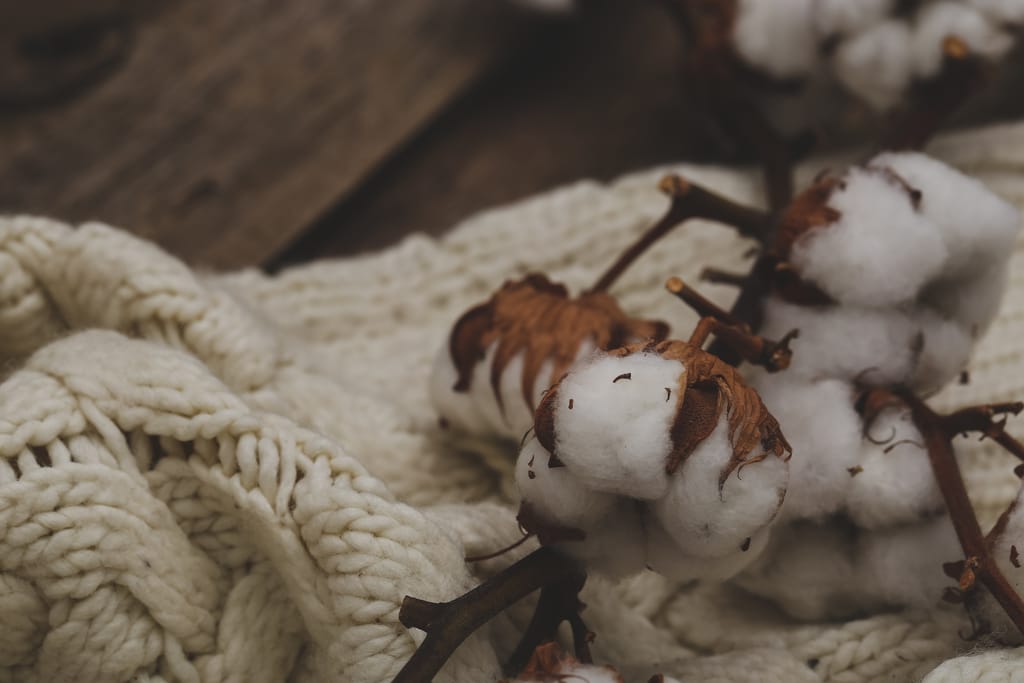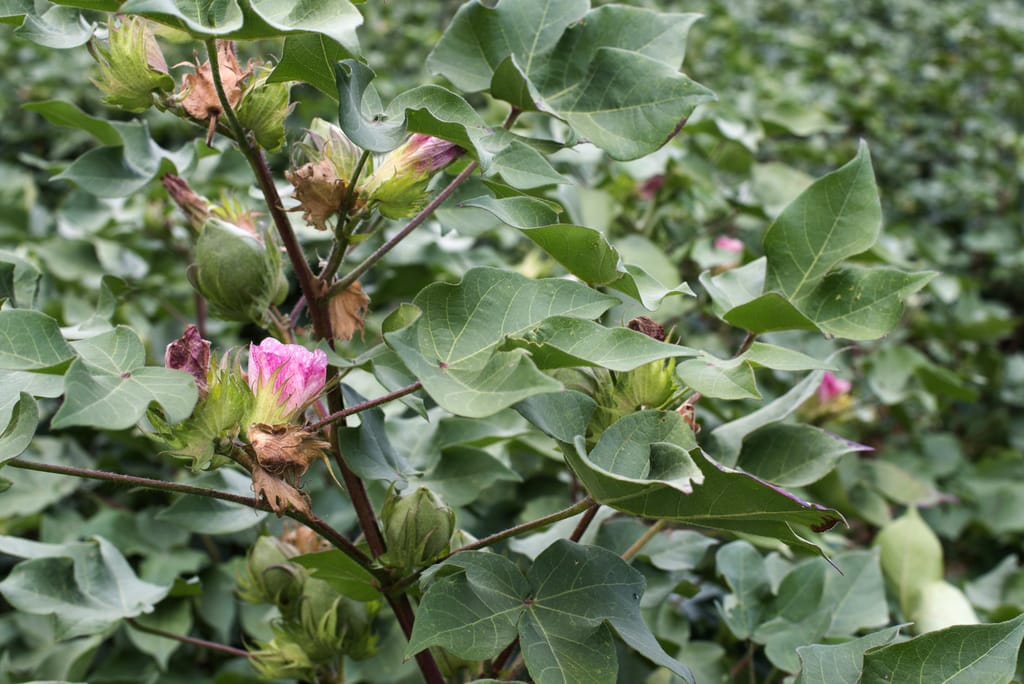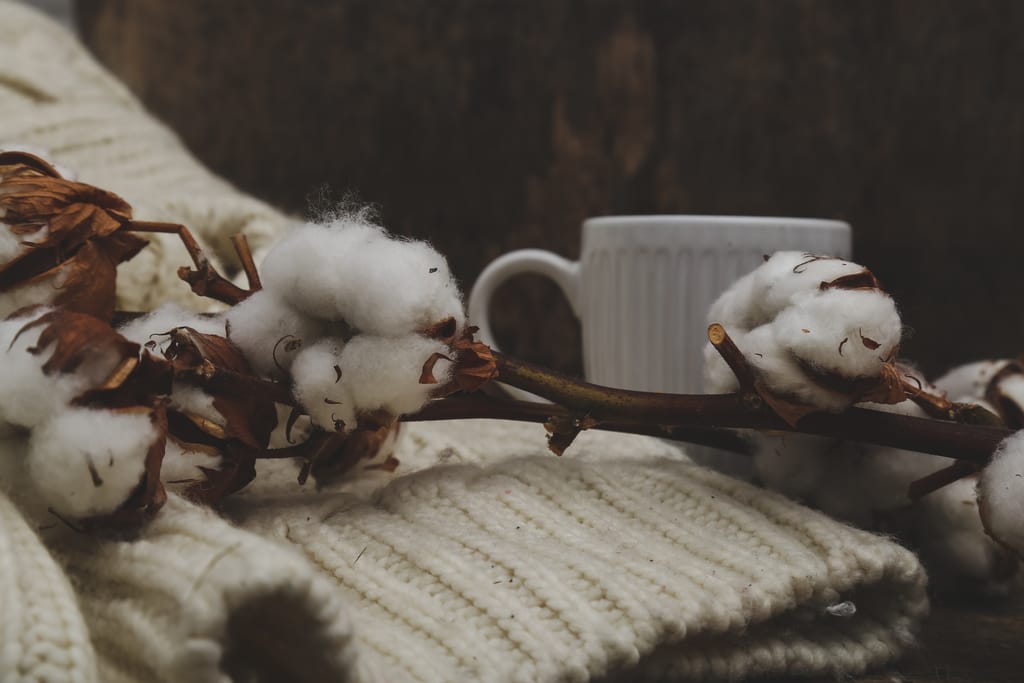What is Organic Cotton?
Organic cotton is a textile produced from cotton flowers without synthetic fertilizers, pesticides, or herbicides. They grow it using organic farming practices, which help to promote soil health and biodiversity.
This amazing textile is a natural and sustainable fiber that is gentle to the environment. It is likewise soft to wear and sleep on. It is perfect for people considering an environmentally friendly and sustainable mattress, bedding and clothing option. Let’s look at the advantages of this textile and why we use it on our mattresses.
Advantages
Organic cotton is cultivated without pesticides and other chemicals. It is further processed without harsh chemicals, resulting in textiles for clothing and linen that are both luxurious, smooth, and comfortable.
Organic cotton is more absorbent than alternative cotton types, making it ideal for baby diapers and other absorbent items.
It is biodegradable. This means that when it is discarded, it can be composted and break down into natural materials.
This sustainable fiber is better for the environment and does not require the use of chemicals that can harm the ecosystem. It matters in minimizing the use of pesticides, avoiding water contamination, conserving water resources, promoting biodiversity, and combating climate change.
Organic cotton is a much healthier option than conventional textiles. It is not treated with chemicals and pesticides that can be absorbed by the skin or inhaled into the lungs. It also does not contain any potentially toxic dyes or bleaching agents, meaning it is free of allergens and irritants that can cause skin irritation and other health issues. It is often much softer and smoother than conventional cotton, which can help to reduce skin irritation and discomfort.

Organic vs. conventional cotton
Organic cotton is a sustainable and Eco-friendly alternative to conventional cotton. They grow the crop without the use of synthetic pesticides, herbicides, and fertilizers, making it a much healthier option for both humans and the environment. They also grow it using natural methods that require less water and energy than conventional cotton.
They still make the organic variety from the same species of cotton as conventional cotton, but they grow it in ways that do not harm the environment or the health of those who wear it. They grow it without the use of synthetic fertilizers, herbicides, and pesticides. This eliminates the risk of toxic chemicals being released into the environment and ingested by humans.
Organic cotton does not use genetically modified organisms (GMOs), which are harmful to the environment.
The textile is also a much more sustainable option than conventional cotton. They rotate organic crops to avoid soil depletion and maintain soil fertility, while conventional cotton uses synthetic fertilizers to achieve higher yields.
Organic cotton farmers use compost and natural pest control methods to reduce their environmental impact, while conventional cotton farmers rely on chemical-based fertilizers and pesticides.
It is also softer and more durable than conventional cotton, as they grow it in a way that encourages the growth of healthy fibers.
As a textile, organic cotton is also more breathable and less likely to cause allergic reactions than conventional cotton, as it is free of toxins, dyes, and other chemicals.

Overview
They grow organic cotton without the use of synthetic fertilizers, pesticides, or other chemicals, resulting in a healthier product for consumers and a more sustainable agricultural system. In order for farmers to successfully produce organic cotton, they must understand the process and requirements of organic certification.
Organic certification is a rigorous process that begins by verifying the land on which they will grow the cotton meets organic standards. This involves a thorough review of the land’s history, including any past use of synthetic chemicals, to ensure that the land has been free of any prohibited substances for a minimum of three years. The farmer must also develop an organic management plan that outlines the practices they will use to maintain organic production. An organic certifying body in order for the farmer must approve this plan to be eligible for certification.
Once they have gained organic certification, the farmers must adhere to certain standards in order to maintain their organic status. This includes using organic techniques for soil fertility, pest control, and weed management. Fertilizers and amendments are limited to those derived from natural sources such as animal manure, compost, and mineral-based materials. Pesticides and herbicides may only be used when absolutely necessary and must be approved for organic production.
Crop rotation and other practices to promote soil health and biodiversity must be implemented. Organic cotton production also requires careful monitoring throughout the growing season. Samples of the soil, foliage, and cotton must be taken and tested to ensure that no prohibited substances have been used. Records of all inputs, including fertilizers, amendments, and pest control measures, must also be kept and submitted to the certifying body.
Organic cotton production can be a rewarding venture for farmers, providing them with an environmentally friendly alternative to conventional cotton production while also providing a premium price for their crop. However, farmers must understand the process and requirements of organic certification and commit to maintaining the standards of organic production in order to be successful.

Environmental affects
As more people realize the environmental effects of conventional cotton production, organic cotton has become more popular. They grow organic cotton without the synthetic pesticides and fertilizers used in conventional cotton production, leading to a reduced environmental impact. They often grow organic cotton using traditional farming methods, which can help support local communities and conserve natural resources.
We have found organic cotton to have a significantly reduced environmental impact when compared to conventional cotton. Its production does not use artificial fertilizers and synthetic pesticides, which can cause water pollution, groundwater contamination, and air pollution. Organic farming practices can reduce soil erosion, conserve soil fertility, and increase water retention.
Organic cotton production can also help support local communities and conserve natural resources. Its production often uses traditional farming methods, such as crop rotation and natural pest control, which help conserve natural resources and support local communities. Organic production uses fewer resources than conventional cotton production, leading to a reduced environmental impact. Organic cotton also has several benefits for consumers. Many organic cotton products are free of harsh chemicals and dyes, making them safer for skin contact.
We have found organic cotton to be more durable than conventional cotton, meaning it can last longer and reduce the need for frequent replacement. It has several environmental benefits and can help support local communities and conserve natural resources.
Organic cotton also has several consumer benefits, such as being free of harsh chemicals and dyes and being more durable than conventional cotton. For these reasons, organic cotton is an excellent choice for those looking to reduce their environmental impact.

Conclusion
Organic cotton is a natural fiber grown without pesticides or other chemicals, and it is more environmentally friendly and sustainable than conventional cotton.